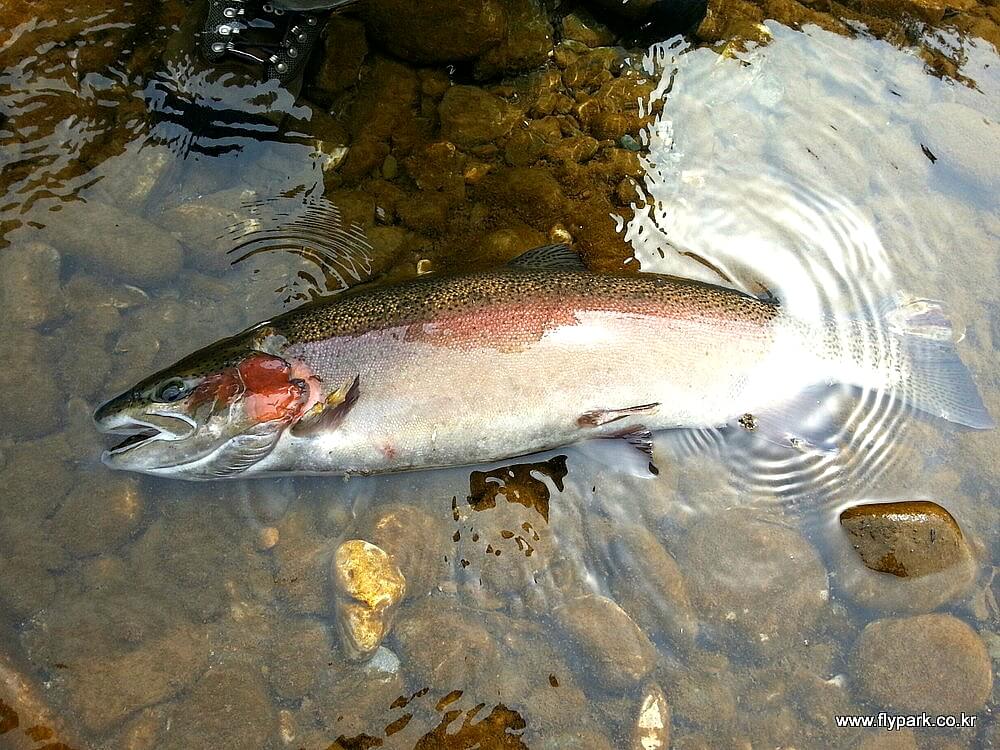Much effort is being made to maintain the steelhead population. For example, according to MNR’s Huron Lake supervisor Dave Reid, the regulation of Huron and Superior Lake is working hard to maintain the current regulation, simplify complex regulations, and continue to provide ample fishing opportunities. Steelhead phishing regulations in Lake Ontario are being carried out in conjunction with the U.S. state of New York.
John’s key to maintaining Superior Lake’s steelhead is to keep the loss of adult steelhead from fishing at less than 15 percent each year, allowing 55 percent of the population to spawn. If the loss of steelheads from fishing can be minimized, it won’t take too long for the steelhead population to rise again, he says. Long-standing observational studies at Portage Creek show that the number of steelheads that came up for spawning, from just 400 in the 1990s, has recently increased to 1,600 simply because they have lost money from fishing. Superior trout are 100 percent wild fish because they have never released rainbow trout in Superior Lake in Canada. Due to the nature of the cold and clean Superior Lake water, the average size of steel heads caught in Superior is about 5 pounds, and 10 pounds is a very large amount.
Recently, I asked John if he thought that the release of another salmon species, especially Chinchin Salmon, affected the steelhead of Superior Lake. He said the impact of salmon will be mostly positive. “I think the body of the relative salmon that died after spawning will decay and have a positive effect on feeding the malnourished Superior Lake’s strong system.”

In some areas, fish have been released under the Community Fisheries Involvement Program (CFIP) program, but the number of steelhead dogs that breed in Huron Lake’s own ecosystem is also good. Recently, rainbow trout were caught very well in the northern waterways of Georgia Bay, a result of meat escaping from local fish farms. Due to the relatively low-risk and productive environment of Huron Lake, a large number of steel heads can reproduce, and thus more phishing presses can be covered. Meat also grows big in this area. Ten pounds of steel heads are common here. Still, ecologists believe that maintaining a 50 percent spawning population is necessary for preparation for a future of declining dog harvests. Huron Lake Steelhead Fishery’s recurring problem, hot summer heatwaves, especially when combined with drought, can be fatal to steelhead cheerleaders.
It is done in the center of Erie Lake and steelhead fishing boats are the result. Eric Lake’s fishing would not have been very good if there was no artificial release of fish. This is because there are not enough river streams to spawn in Erie Lake. On the side of Ontario, the Erie Lake river flows along the dark belt, which is also the center of the crop. Even if it wasn’t an agricultural area, Herrick believes that the rivers here are not the right environment for Steelhead to spawn. However, the sand plains of Norfolk County, the eastern station where Pork Stanley and Steelhead were first released, are breeding well. As a result of agricultural cooperation over the past decade, soil conservation has been well done, and the development of fish habitat environments such as Fishway, which have created large streams of water, has greatly increased the number of steelheads that come up to spawn.
In the Grand River, the demolition of a dam near Brantford in 1989 allowed the steelheads to move to many spawning Z also. Hallick predicts that the demolition of the dam could still breed more steelheads in the Grand River.
This is due to much cleaner water quality than ever before, which is the result of the breeding of Zebra and Quagga mussels, who suck in water and eat it by walking. (Hmm. I thought the Zebra mussel was always known as an ecological wreck, but it had a positive effect.) Although the recent steelhead population has declined slightly, the situation in Lake Ontario is also positive. The reason for the decline in steelheads in Lake Ontario is believed to be the rapidly changing ecosystem in the lake. The situation in Great Lakes continues to change, but the change in Lake Ontario, in particular, is considered the most positive.
According to Lake Ontario ecologist Jim Pauli, over the past few years, Chinchin Salmon, Coho salmon, Lake Trout, and Lake sturgeon have been reported to be breeding successfully. He says something is changing inside Lake Ontario. According to him, the Steelhead Fishery in Lake Ontario consists of 40 percent of the wild species Steelhead. Maintaining wild species is also very important in Lake Ontario. But the Ontario government and volunteers are releasing Steelhead into rivers near Toronto, including Credit River, Rose River, and Bronte Creek.
Paul believes the fishing situation in Lake Ontario is still good, but the sharp increase in anglers has affected the recent decline in steelhead dog harvests. He believes that the increase in fishing on the lake and downstream fishing, where fishing is allowed throughout the year, has affected this situation.